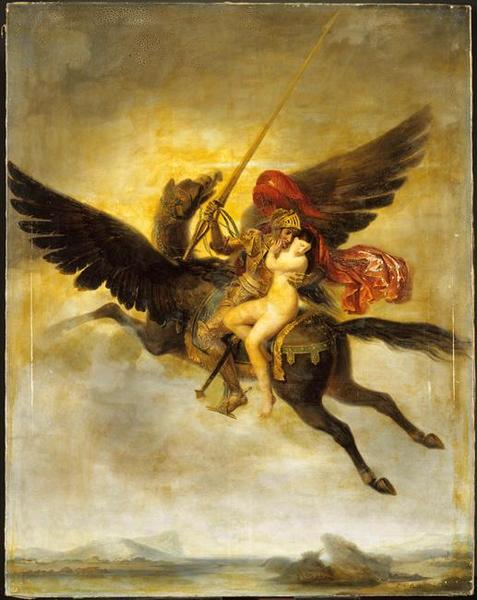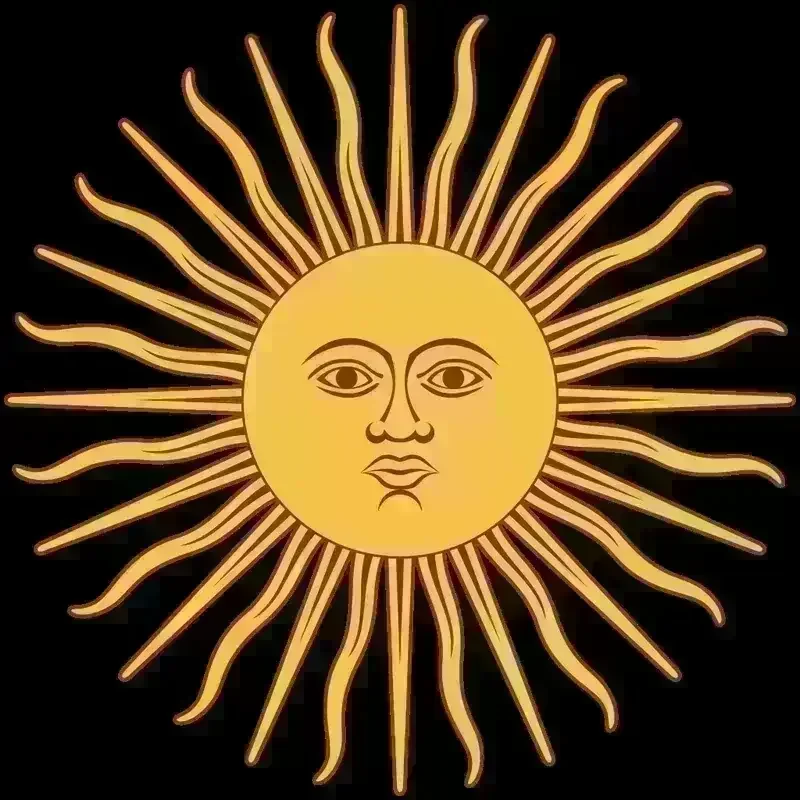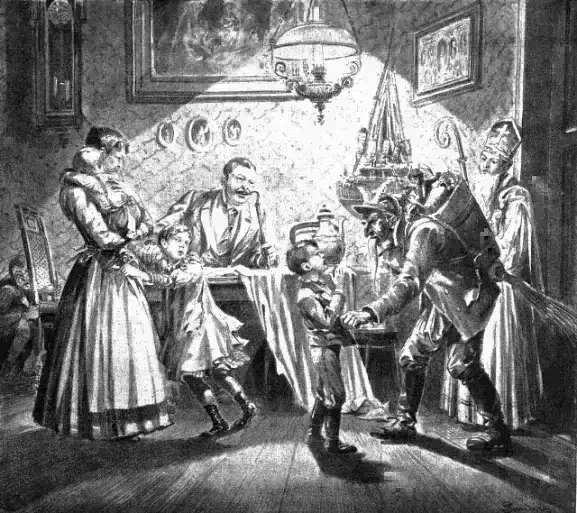Hippogriff

The hippogriff (Italian: ippogrifo), also known as the hippogryph, is a mythical creature featuring the front half of an eagle and the hindquarters of a horse.
It first appeared in the early 16th century, created by Ludovico Ariosto in his epic poem Orlando Furioso. In the story, the hippogriff is born from the unlikely union of a griffin and a mare—an impossible combination according to legend. Described as incredibly swift, the creature can fly across the globe and even reach the Moon. It serves as a mount for magicians and the knight Ruggiero, who uses it to rescue the beautiful Angelica. Another character, Astolfo, later borrows the hippogriff from Bradamante to search for Roland’s lost sanity.
In the 19th century, the hippogriff became a popular subject in visual art, notably depicted by the artist Gustave Doré.
According to Spanish historian Vidal, the creature was once believed to inhabit the area near Céret, in the County of Roussillon (now part of France) during the Middle Ages. Claw marks found on a rock near Mas Carol were thought to be evidence of its existence.
However, belief in the hippogriff faced strong criticism. An 1862 scientific essay on religion dismissed the creature as implausible, arguing that it could neither be a divine creation nor a real animal. The essay referenced the Book of Enoch, which describes how Satan and his fallen angels created hybrid beings—like the Sphinx, the most famous of such creatures. It also pointed out the anatomical issue that the wings required to lift such a body would be too large and heavy for flight, thus proving, in the author's view, that the hippogriff could not exist.
Symbolically, the hippogriff holds different meanings. In some traditions, it represents love, as it is born from two natural enemies—the mare and the griffin. In others, it serves as a symbol of Christ's dual nature, embodying both humanity and divinity.


